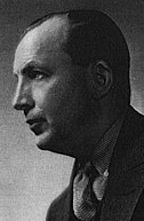John Tjaarda
A US product and automotive designer, Tjaarda (pronounced "charda") was born in Holland of a titled family in the Sterkenberg area. He trained in aeronautical design in England and served as a Dutch Air Force pilot before emigrating to US in 1923. He initially worked on custom bodies in Hollywood (where Harley Earl worked until he was hired by General Motors in 1927).
In 1926 Tjaarda pioneered in monocoque streamlined car designs using clay models. The designs were called the Sterkenberg Series after his family ancestral estate. He worked for Duesenberg from 1928 to 1930, then for Harley Earl from 1930 to 1932. During this period with Earl, he refined his aerodynamic work.
In 1932 he was hired as chief of body design by the Briggs Manufacturing Company, the major body producer for both Ford and Chrysler. Using his earlier aerodynamic concepts, he developed a streamlined "dream car" (see Products) for Ford to display at the Century of Progress Exhibition (1933-1934) in Chicago. The rear-engine car with a unitized body was aimed at Ford's need for a "small" Lincoln, and bears striking resemblance to the early Volkswagen then being developed by Ferdinand Porsche in Germany.
Indeed, the "dream car" design became the basis for the 1936 Lincoln Zephyr (See Products) which Tjaarda designed with Howard Bonbright under the supervision of Edsel Ford and Bob Gregorie, head of Ford's newly established Styling Department.
In 1935, an early "Kitchen of Tomorrow" designed by Tjaarda was exhibited by Briggs Manufacturing Company. The kitchen included a cylindrical electric range center island, lit by a lamp that rose from the center like a periscope.
Like father like son. Tjaarda's son Tom (b.1934) was trained in architecture at the University of Michigan, and in 1959 re-located to Italy, where he worked as a car designer at Ghia, designing the DeTomaso Pantera and the Ford Fiesta; and also at Pininfarina . He established his own small automotive design office, Dimensione Design, in 1984.

